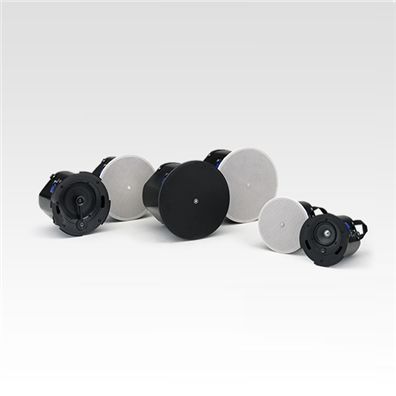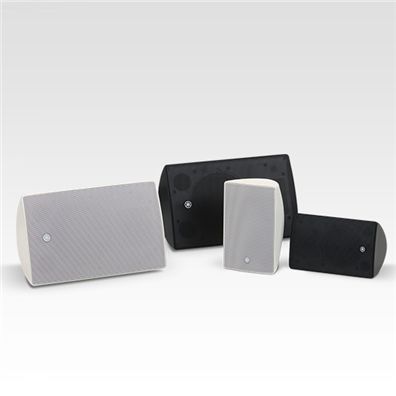University challenge : Yamaha’s AFC3 technology has transformed the acoustics of the auditorium
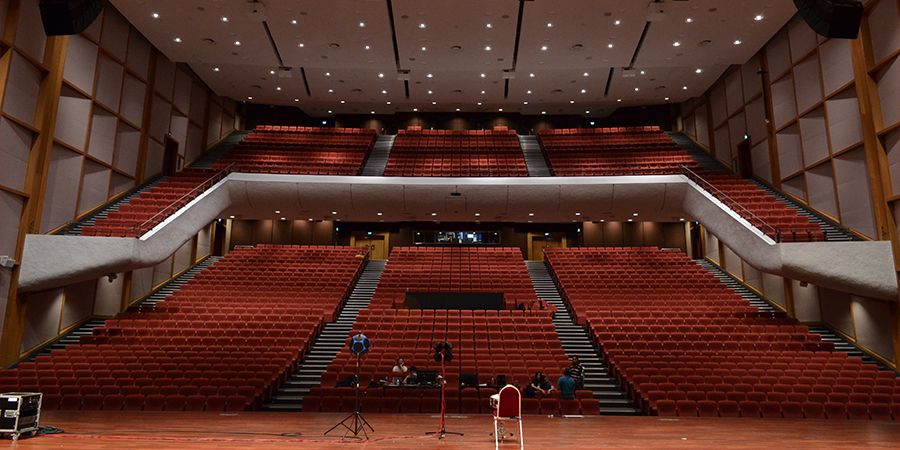
Yamaha’s AFC3 technology has transformed the acoustics of the auditorium in Singapore’s Nanyang Technological University. Caroline Moss visits

Nanyang Technological University (NTU) describes the Nanyang Auditorium, which lies at the very heart of its campus, as its pride and joy. The 12,123 square metre venue can accommodate 1,729 people, 1,193 in the stalls and 534 in the circle. While the auditorium was more suitable for speech-related applications, it was less optimal for acoustic performances. The sound quality was also being experienced unevenly throughout the auditorium.
The university identified three major areas for improvement. Performers needed be able to hear each other across the stage, while increased sound propagation from the stage towards the audience was necessary. Finally, an even acoustics and aural experience should be provided for the entire audience.

Yamaha Music (Asia) proposed its AFC3 Active Field Control technology, an acoustic conditioning system designed to adjust and enhance the architectural acoustic characteristics of facilities such as performance venues, houses of worship, theatres and concert halls using electroacoustic equipment, at the same time maintaining the natural sonic characteristics of the space. The system uses a hybrid modular regenerative technique that interacts with the venue’s existing acoustic behaviour. AFC3 comprises a redundant, autonomous Dante-networked infrastructure, one or more DSP units, one or more multi-channel power amplifiers plus a number of loudspeakers and microphones. Once installed, reverberation changes can be made at the push of a button, allowing the performance environment to be adjusted almost instantly while delivering consistent sound to performers and audience members alike. Some examples of where AFC3 can be used effectively is for holding classical concerts in a large hall without a sound reinforcement system, to accommodate an organ in a small church or to enhance crowd response in a stadium.
AFC was introduced in 1985, with AFC3 representing its third generation from 2012. The NTU’s system – which is driven by 168 channels of Dante amplification - is AFC3’s third largest channel count after a 211-channel installation at the Tokyo International Forum, and a 182-channel installation in Warsaw, Poland. It is also the largest to date in Southeast Asia, though Yamaha Music (Asia) has installed three previous AFC systems in Singapore.
‘Because the technology has evolved through AFC1, 2 and 3 there’s been a lot of improvement,’ claims Lawrence Tan, assistant general manager, Yamaha Music (Asia). ‘The stability of the system is really good. When reverberation is introduced with microphones, it’s going to create feedback loops, so stability is critical. We don’t need to use a lot of mics with our system.’
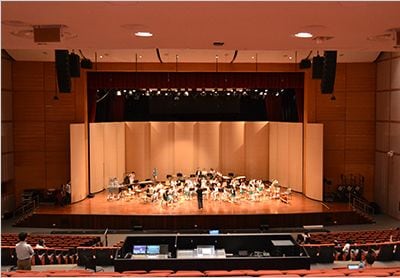
Together with a hybrid AFC3 system, Yamaha also proposed a Wenger Forte acoustic shell tower at the sides and rear of the stage for acoustical diffusion support. Sound reinforcement in the auditorium was being provided by a Nexo Geo D line array system installed in 2010 and that was still operating well, so Yamaha – which distributes Nexo in Singapore - offered the venue the service of retuning the system within the new acoustic environment. This marks the first time Yamaha AFC has been implemented in conjunction with Nexo loudspeakers.
The project was put out to tender, with Pave System winning the contract for the entire integration, including supply and installation. ‘We worked hand in hand with Pave, guiding the team through the AFC system and how to implement it,’ continues Yamaha Music (Asia)’s Joseph Foo, who worked closely with Pave as well as Yamaha’s Japanese engineers and acoustic consultant Alpha Acoustics to implement the audio design.
In the first phase of the project, acoustic material was used to dampen the auditorium’s reverberation time down from 1.5 seconds to one second, reintroducing reverb back via AFC3. The second phase involved fitting the 168 Yamaha and Nexo speakers which comprise the AFC system. This would provide the auditorium with enhanced reverberation, early reflection, a system to improve the spatial qualities of the balcony and an electronic shell to provide acoustical support for musicians on stage. When installed, AFC3 would be able to provide variable settings for different performances while preserving the auditorium’s natural acoustics. It also had the benefit of being able to offer simple end-user control in a cost-effective solution.
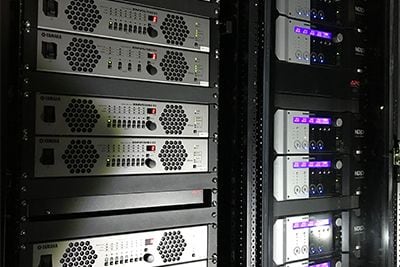
A total of 46 Yamaha VXC6W 6.5-inch and 42 Yamaha VXC8W 8-inch ceiling speakers have been installed for the main house, with a further 18 Yamaha VXC6Ws and 10 VXS5W 5.25-inch surface mount speakers covering the upper balcony, and another 46 VXC6Ws and 12 VXS5Ws for under balcony. Altogether, this constitutes the audience reverberation system.
Eight Nexo PS8 speakers and four Nexo LS18 subs act as the early reflection system, together with a further six Nexo PS8s on stage. Additionally, 22 of Nexo’s recently-introduced ID24i installation speakers onstage comprise an electronic stage system.

Each speaker has a dedicated amplifier, allowing individual delay and processing settings through the entire system. This requires 168 channels of Yamaha and Nexo Dante amplification, which involves a total of five Yamaha XMV8280-Ds, one Yamaha XMV4280-D, 10 Yamaha XMV8140-Ds, one Yamaha XMV4140-D, 10 Nexo NXamp4x1C with NXDT104 Dante network card and one Nexo NXamp4x4C with NXDT104 Dante network card.
Seven AFC3 core DSP units with FIR (finite impulse response) processing functions forms the heart of the system, signal routed through Dante network cards, with two Yamaha ICP1 intelligent control panels, Creston Wi-Fi remote control and Audix and Audio-Technica microphones.
‘Each channel has a different performance within the space, and we are able to create a very stable loop between the system and the mic pickups,’ explains Mr Tan.
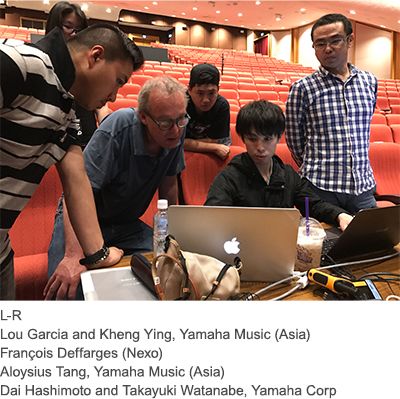
As part of the renovations, a new front of house position has been created in the centre of the auditorium, which will sometimes be used instead of the first floor level control room, set behind glass. The existing Yamaha M7CL-48 digital mixing system is currently being used in the auditorium.
The stage has been installed with a Wenger shell, which can be reconfigured depending on the number of performers. ‘It’s needed because the stage area is big with lots of height,’ says Mr Tan. ‘If there’s an acoustic performance, the sound would travel all the way up and disappear, so this will contain and diffuse the energy and reflect it outwards by forming a shell within the stage. Because there’s no ceiling reflector, the Nexo ID24i speakers and PS8s will form an electronic shell to provide an early reflection to the musicians.’
Pave System, which was awarded the contract in September 2016, was given a very tight window in which to complete system integration during the university’s summer break the following May. ‘We only had 53 days for all the various contractors to come in and complete the installation so the auditorium was ready for the National Institute of Education’s Teacher’s Investiture ceremony in early July and NTU’s Convocation ceremony later that month,’ says Pave System managing director, Jeffrey Lim, who nevertheless was satisfied that the installation had gone well. ‘We had ample time to plan, which was vital as we were responsible for ensuring all the different services were brought in at the right time.’

This included coordinating the spraying of acoustic treatment, fitting panelling, construction of the Wenger shell, speaker installation and cable work. ‘We had to section off the auditorium, so if someone was spraying at the upper level the others would work at the lower part, then they would switch,’ recalls Mr Lim. ‘When the project started in early May there were about 20 of us from Pave involved. With the other services, this went up to as many as 30-40 workers at one time.’ An important part of Pave’s work was to reinforce part of the false ceiling before the ceiling speakers were installed. This was rectified before the main work started. ‘We also brought in another consultant to test the acoustics of the place before we started work, doing measurements and carrying out preparations,’ explains Mr Lim. Once the AFC3 system had been installed, engineers from Yamaha in Japan arrived to tune the system, which took a week. Meanwhile, the existing Nexo Geo D line array system was retuned by engineering support manager Val Gilbert, who travelled over from France.
The Nanyang Auditorium has been transformed by AFC3, which will increase the types of events it can handle, giving more scope for musical performances in particular. ‘The auditorium is intended to be very multifunctional, and this will give it more flexibility,’ says Mr Tan. ‘AFC3 will be used for acoustic performances such as orchestras, piano recitals and choirs. Any live electronic music will be reinforced through the Nexo Geo D line array system, and the AFC3 will be switched off.’
The technology will also be used to improve acoustics for educational seminars and lectures held in the auditorium. ‘Our technology enhances the natural sound of multipurpose halls such as this one,’ says Chihaya ‘Chick’ Hirai, director, ASEAN PA business division, Yamaha Music (Asia). ‘It can be adapted as per the application; for example speeches need no reverb whereas classical music does. This is why AFC3 is particularly good for multipurpose halls of this nature.’
And where better to put the technology into action but one of Singapore’s leading auditoria.
Articles contributed by Caroline Moss
Related Products
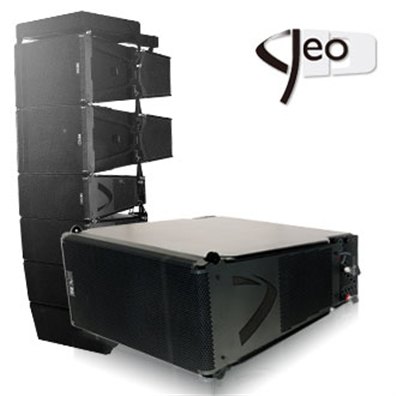
NEXO GEO D Line-Array System
NEXO's GEO D10, is an example of legendary NEXO sonic innovation in a cost-effective, one-box vertical array system.
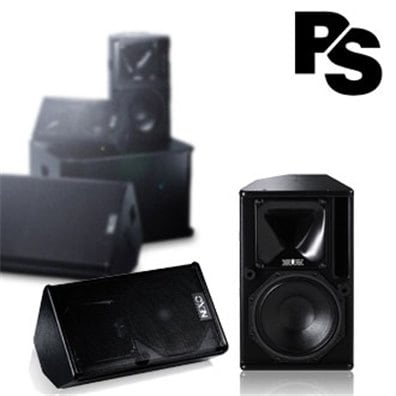
PS8
A high power system capable of producing 125dB Peak SPL, the PS8U-R2 Loudspeaker can be safely driven with up to 500 Watts of amplifier power.
Location
Location



